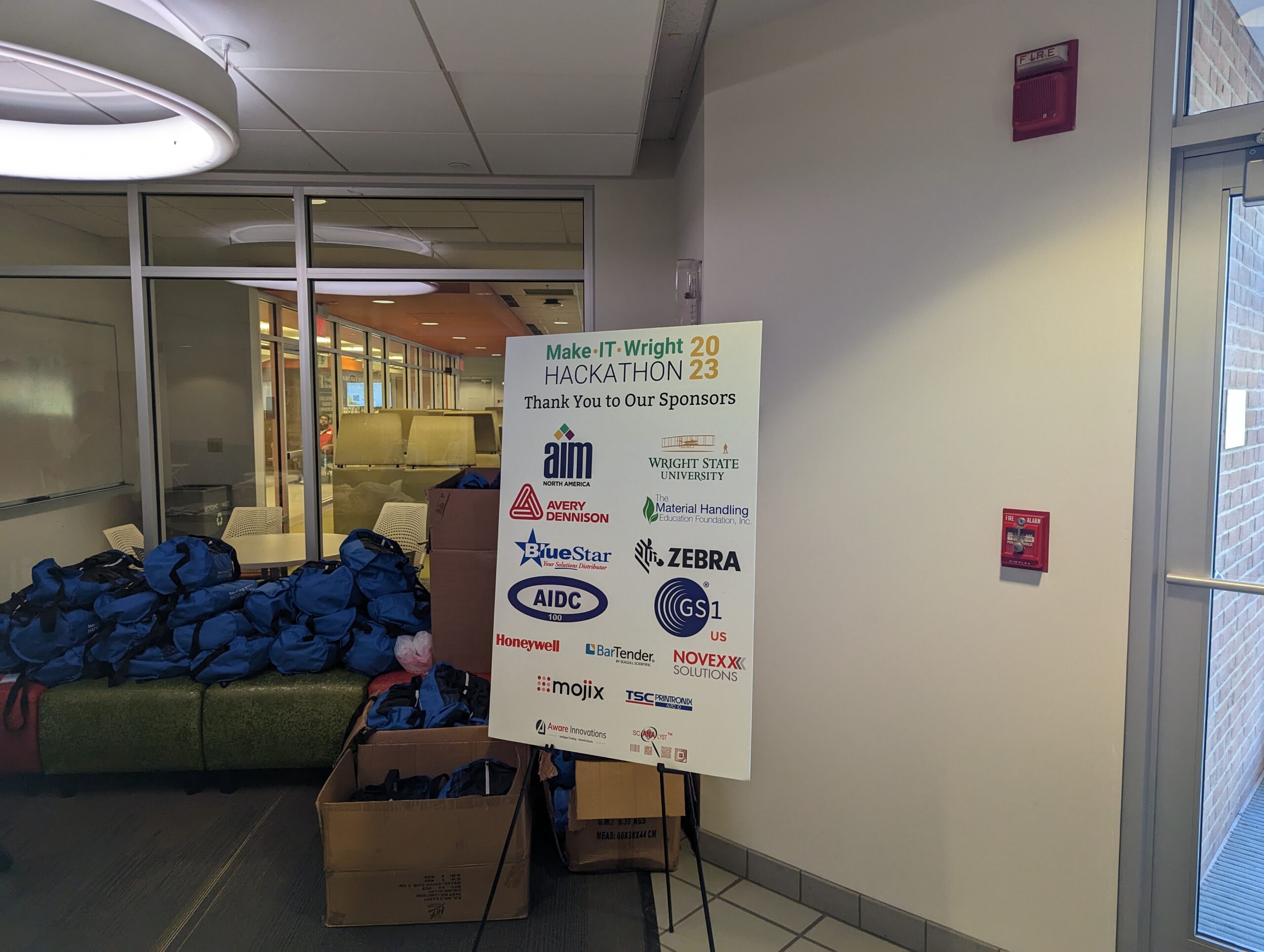
Make-it-Wright Hackathon | Photo by Arden Reimer | The Wright State Guardian
On Feb. 4 and 5, Wright State University held its Hackathon marathon in the Russ Engineering Building. This two-day event tasked students with problem-solving projects in supply chain management with awards between one thousand to three thousand dollars.
Months of planning
Matthew Kijowski, cyber systems program manager at WSU, said the Hackathon took seven months to plan. Wright State University worked closely with technological and innovative organizations, including AIM North America and Avery Dennison, among others. Kijowski described this planning process.
“Every Friday at 10 a.m. going back to last year, we’ve been meeting and planning this meeting with various industry folk that were contributing money, supplies, this that and the other,” Kijowski said.
Kijowski highlighted the efforts of Mary Lou Bosco of AIM North America and Jeanne Duckett of Avery Dennison, who were both crucial in helping the Hackathon run as well as it did. These efforts, in addition to the many volunteers and mentors who donated personal time, contributed to the success of the two-day event.
What is a Hackathon
WSU students had the option to choose from four different challenges in the supply chain related to the post-pandemic agricultural and medical industries. The program manager talked about the event, its purpose and its goals.
“The Hackathon is an invention marathon,” Kijowski said. “The goal is to get students together for a very short, very condensed, zero to sum invention spree.”
Kijowski explained that the goal of this particular Hackathon was to give students real world experiences in supply chain technologies and bolster problem-solving capabilities. The teams had to produce functioning Radio-Frequency Identification (RFID) codes and present procedures and results for judging.
“All four of these challenges were very similar in that students had to use open standards to develop a product that facilitated supply chain management in an area,” Kijowski said.
Student experiences
Students who participated in the two-day event discussed personal experiences. Sophomore Divine Eziolise explained the benefits of the Hackathon for future work in the engineering field.
“This is pretty close to the field, actually being in engineering, doing work, solving problems. That kind of got me interested in meeting professionals, seeing how they approach these kinds of problems and how we can try and solve them,” Eziolise said.
Carter Mansell, freshman electrical engineering major, echoed these thoughts.
“I am doing this because I want advancement in this field as well as just something good that I can put on a resume, that I can talk about in an interview, and some businesses like to see that,” Mansell said.
Ryan Miller, a graduate student, expressed the event as a refreshing change to most of the engineering work in the Dayton area.
“It’s a nice introduction into a space that’s not, you know, about the department of defense, which is what the area here focuses on,” Miller described.
Sophomore Reese Hatfield, who worked with Miller, also talked about experiencing the Hackathon.
“I am excited to get to the technical aspect of it and actually design something that we made ourselves,” Hatfield said.
CSE PharmaSol, which was Miller and Hatfield’s team with sophomore Kaden Tullis and junior Braden Pennie, was successful in its design and took first place, winning the $3,000 prize.
For those who could not participate in the Hackathon, Kijowski said there are other opportunities for student-involved events, including an annual Raider cyber security competition with more information here.
